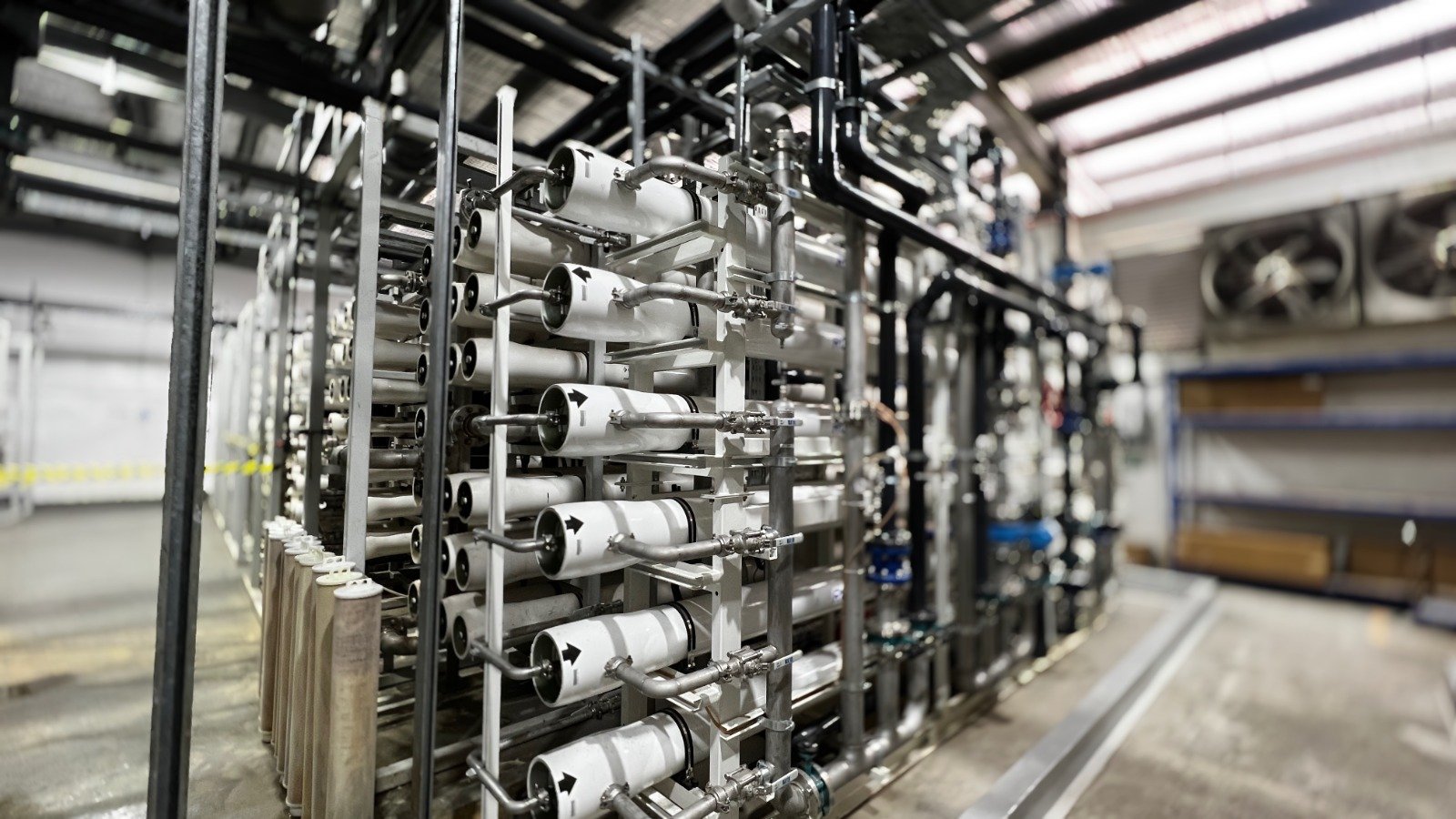RO Plant & Skid

| Capacity | 100 Liter to 1MLD |
|---|---|
| Construction | Portable and constructed |
| Support | Stage 1 to Ultra filtration/Nano filtration |
| MOC Skid | MS, EN-8, SS304, SS316, SS316L, Duplex & Super Duplex Steel, (Comes with Various Lining RL, FRP, PP, PTFE) |
| Efficiency | Based on the raw water parameters |
RO Plant: Essential Technology for Water Purification
Introduction
Reverse Osmosis (RO) plants are vital systems designed to purify water for various applications, ranging from drinking water to industrial processes. At FLOMEK Singapore, we specialize in designing, manufacturing, and supplying state-of-the-art RO plants tailored to meet diverse customer needs. This guide will explore the importance of RO plants, their components, advantages, applications, and how FLOMEK pressure booster skids in Singapore enhance their efficiency.
What is an RO Plant?
An RO plant utilizes reverse osmosis technology to remove impurities and contaminants from water. This process involves applying pressure to water, forcing it through a semi-permeable membrane that allows only clean water to pass while blocking dissolved solids and other impurities.
How RO Works
- Pre-Treatment: The incoming water undergoes pre-treatment to remove larger particles, chlorine, and other chemicals that could damage the RO membrane.
- High-Pressure Pump: A high-pressure pump, often a FLOMEK pressure booster skid in Singapore, is used to create the necessary pressure for the RO process.
- Membrane Filtration: Water is forced through the RO membrane, separating pure water from contaminants.
- Post-Treatment: The purified water may undergo additional treatment, such as UV sterilization or mineralization, before storage or distribution.
Components of an RO Plant
- Pre-Treatment System The pre-treatment system is crucial for preparing water before it enters the RO unit.
- Filters Remove suspended solids and larger particulates.
- Chemical Dosing Adjust pH levels and remove chlorine to protect the RO membranes.
- High-Pressure Pump The high-pressure pump is essential for maintaining the pressure needed for the reverse osmosis process. FLOMEK pressure booster skids in Singapore are often integrated into RO plants to enhance water flow and pressure, ensuring optimal membrane performance.
- RO Membranes The heart of the RO plant, the membranes, are designed to allow water molecules to pass while rejecting salts and other impurities. Selecting high-quality membranes is critical for efficient operation.
- Storage Tank Once purified, the water is stored in a tank for distribution. Proper tank design ensures minimal contamination and maintains water quality.
- Control System Modern RO plants include automated control systems that monitor pressure, flow rates, and water quality, enabling efficient operation and quick response to any issues.
Advantages of RO Plants
- High Purification Efficiency RO plants offer superior purification capabilities, removing up to 99% of dissolved solids, bacteria, and viruses from water, making it suitable for various applications, including drinking water production.
- Versatility RO technology can treat a wide range of water sources, including brackish water, seawater, and contaminated groundwater, making it a versatile solution for different industries.
- Cost-Effective Operation Despite the initial investment, RO plants provide long-term savings by reducing the need for chemical treatments and minimizing waste. The use of FLOMEK pressure booster skids in Singapore enhances system efficiency, further lowering operational costs.
- Environmentally Friendly By providing a reliable source of purified water, RO plants reduce the dependence on bottled water, minimizing plastic waste and the carbon footprint associated with transportation.
- Compact Design Modern RO plants are designed to occupy minimal space, making them suitable for various installations, including residential, commercial, and industrial applications.
Applications of RO Plants
- Drinking Water Production
- RO plants are widely used in municipal water treatment facilities and residential setups to produce safe drinking water. The technology ensures that the water meets health standards and is free from harmful contaminants.
- Industrial Water Treatment
- Industries such as pharmaceuticals, food and beverage, and electronics require high-purity water for their processes. RO plants provide the necessary water quality, ensuring compliance with industry standards.
- Desalination
- In regions with limited freshwater resources, RO plants are essential for desalinating seawater, making it suitable for human consumption and agricultural use.
- Wastewater Treatment
- RO technology can be employed to treat wastewater, recovering valuable resources and ensuring compliance with environmental regulations.
- Agricultural Irrigation
- Using purified water for irrigation improves crop yields and reduces the risk of soil and water contamination.




